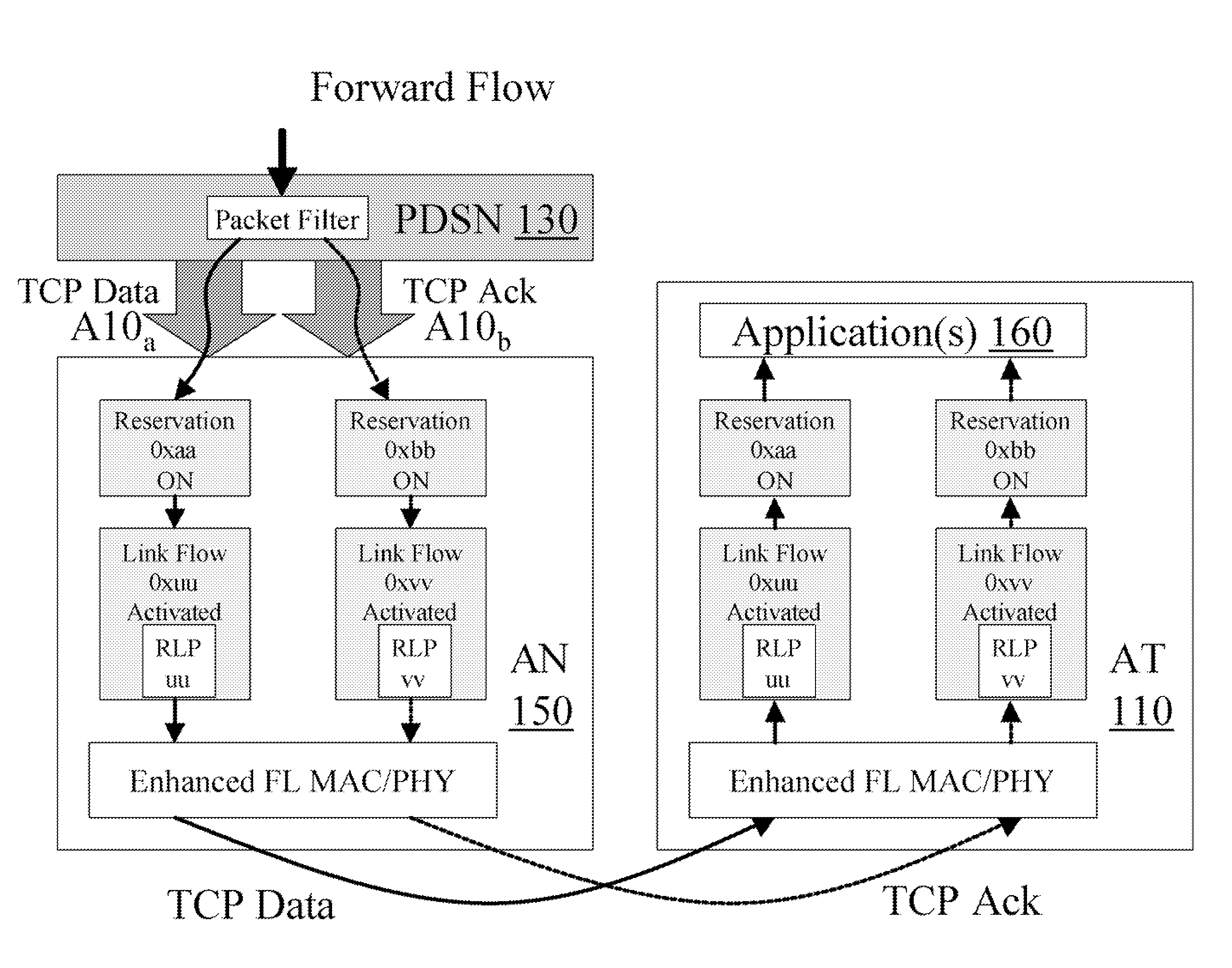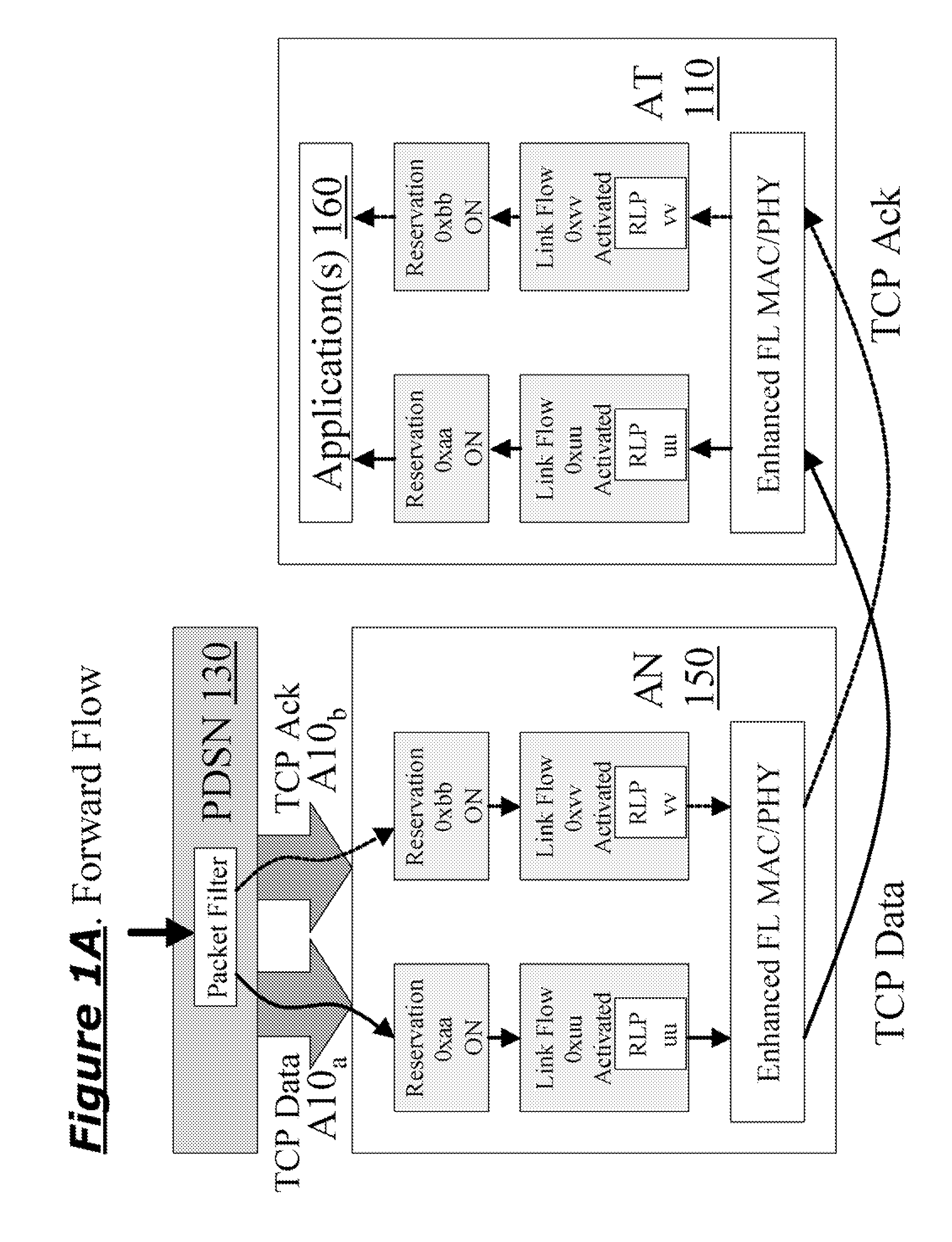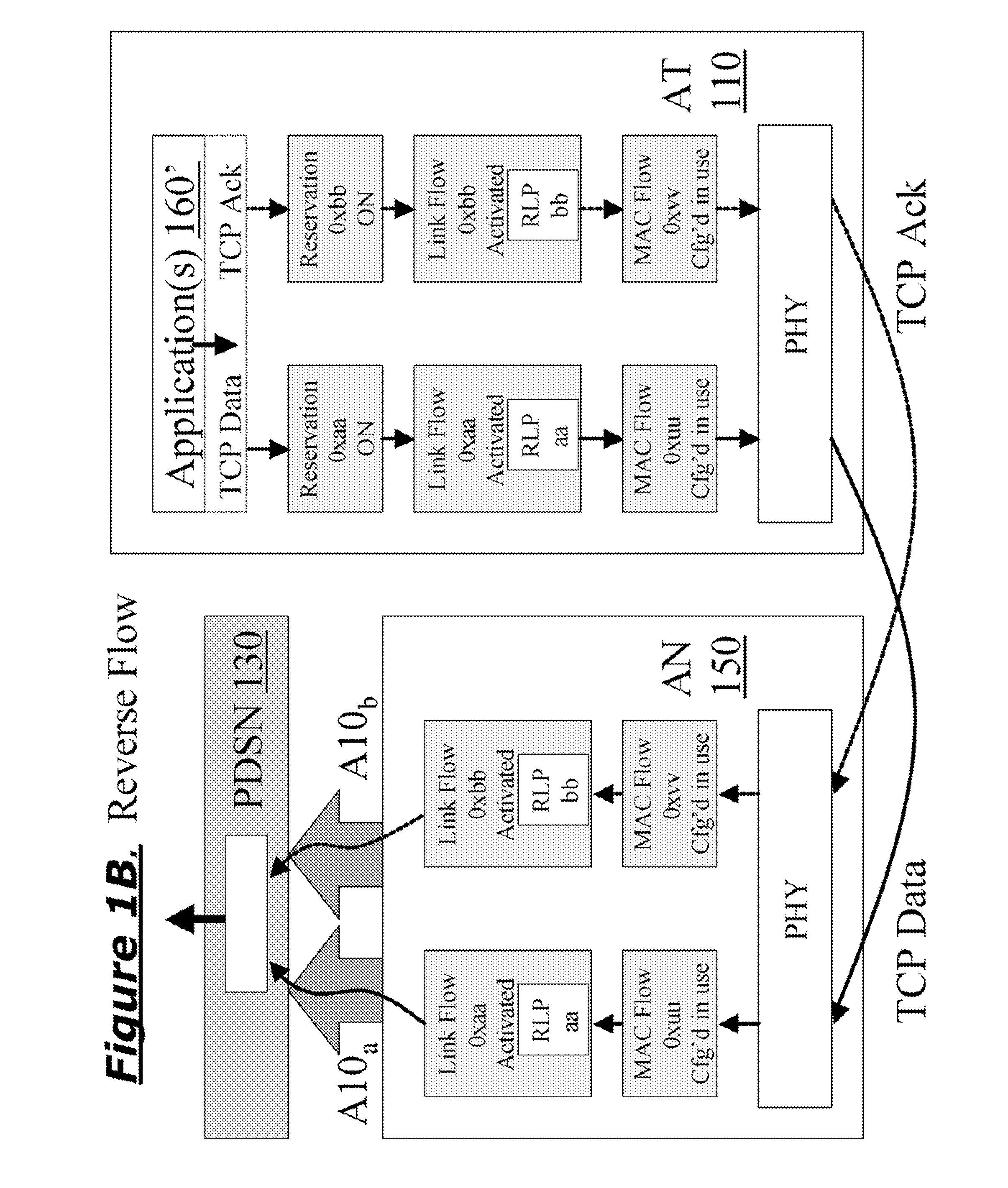Systems and methods for wireless communications
a wireless communication and wireless communication technology, applied in the field of wireless communications system and method, can solve the problems of inherently duplex tcp, packet retransmission unnecessarily, and increasing user's demand for mobile services with greater diversity and complexity of mobile communications, so as to improve tcp throughput, reduce variance in round trip times, and improve the effect of tcp throughpu
- Summary
- Abstract
- Description
- Claims
- Application Information
AI Technical Summary
Benefits of technology
Problems solved by technology
Method used
Image
Examples
Embodiment Construction
[0073]The numerous innovative teachings of the present application will be described with particular reference to presently preferred embodiments (by way of example, and not of limitation).
[0074]FIG. 1C illustrates an example of a network which is advantageously modified to include one or more of the inventions disclosed herein, and thereby improve TCP throughput. Access Terminal (AT) 110 is e.g. an advanced cellphone, which interfaces to Radio Access Network (RAN) 120. AT can also be referred by other names, such as mobile unit, mobile station or user equipment, etc, and can also be PDA or PC equipped with wireless communications capabilities, and RAN can also be named, for example, Access Network (AN) or Base Station (BS), etc. Packet Service Data Node (PDSN) 130 (or Packet Data Node or Data Network Node, etc) provides an interface to the Internet. RAN 120 provides an interface to the PDSN 130 via the RAN-to-PDSN interface 140 (also known as the R-P or A10 / A11 interface). (IS-2001...
PUM
 Login to View More
Login to View More Abstract
Description
Claims
Application Information
 Login to View More
Login to View More - R&D
- Intellectual Property
- Life Sciences
- Materials
- Tech Scout
- Unparalleled Data Quality
- Higher Quality Content
- 60% Fewer Hallucinations
Browse by: Latest US Patents, China's latest patents, Technical Efficacy Thesaurus, Application Domain, Technology Topic, Popular Technical Reports.
© 2025 PatSnap. All rights reserved.Legal|Privacy policy|Modern Slavery Act Transparency Statement|Sitemap|About US| Contact US: help@patsnap.com



